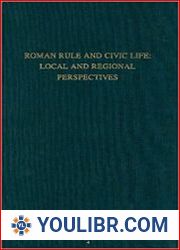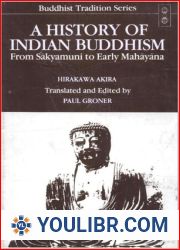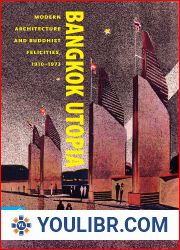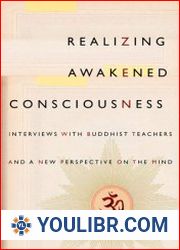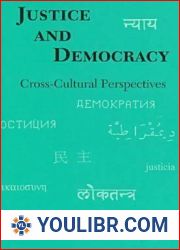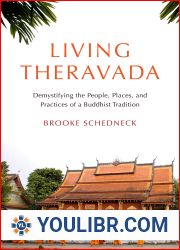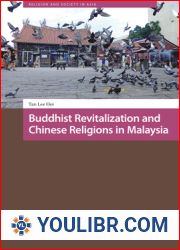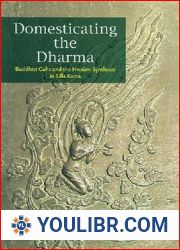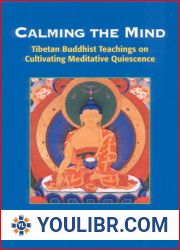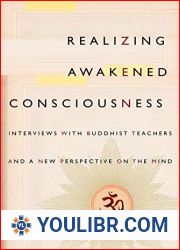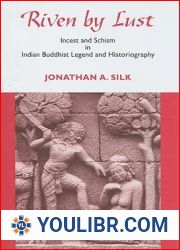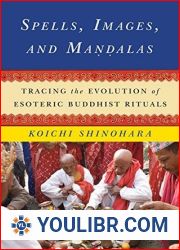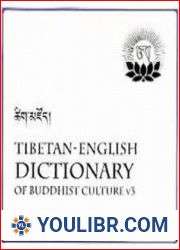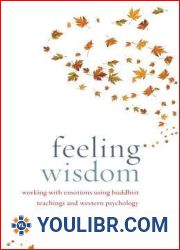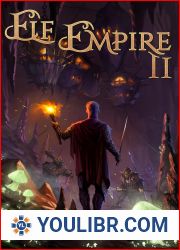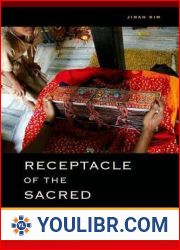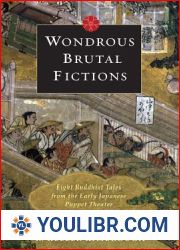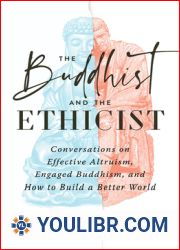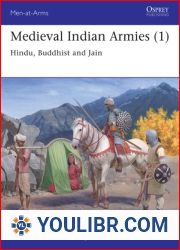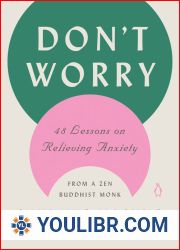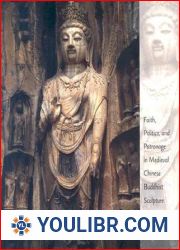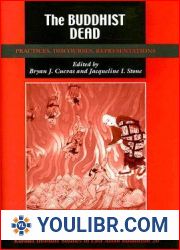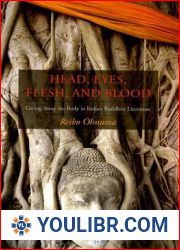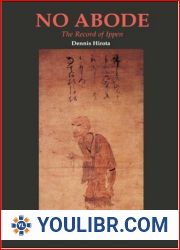
BOOKS - Empire of Emptiness: Buddhist Art and Political Authority in Qing China

Empire of Emptiness: Buddhist Art and Political Authority in Qing China
Author: Patricia Ann Berger
Year: February 1, 2003
Format: PDF
File size: PDF 6.6 MB
Language: English

Year: February 1, 2003
Format: PDF
File size: PDF 6.6 MB
Language: English

Empire of Emptiness - Buddhist Art and Political Authority in Qing China The book "Empire of Emptiness" offers a fresh perspective on the relationship between Buddhism, politics, and art in Qing China, challenging the commonly held belief that Imperial Manchu support for Buddhism was purely cynical political manipulation. The author delves into the vast outpouring of Buddhist painting, sculpture, and decorative arts created by Qing court artists for distribution throughout the empire, exploring the Buddhist underpinnings of the Qing view of rulership and the central role of images in the carefully reasoned rhetoric directed towards Buddhist allies in Inner Asia. Through a multilingual and culturally fluid approach, the book examines the extraordinary range of visual styles employed by the Qing emperors, including Chinese, Tibetan, Nepalese, and European Baroque, brought to the court by Jesuit artists. The author raises questions about the differences between verbal and pictorial description, the embedding of overt and covert meanings in images through juxtaposition and collage, and the collection and criticism of paintings and calligraphy intended for practice rather than as works of art. The book expands our understanding of the visual culture of late imperial China, highlighting its ethnic complexity and offering new insights into the relationship between Buddhist art and political authority. Scholars of the Qianlong era, Mongol studies, and premodern China will find this work indispensable, according to Pamela Crossley of Dartmouth College and Marsha Haufler of the University of Kansas.
Империя пустоты - буддийское искусство и политическая власть в Цинском Китае Книга «Империя пустоты» предлагает свежий взгляд на отношения между буддизмом, политикой и искусством в Цинском Китае, бросая вызов общепринятому убеждению, что императорская маньчжурская поддержка буддизма была чисто циничной политической манипуляцией. Автор углубляется в обширные излияния буддийской живописи, скульптуры и декоративного искусства, созданные цинскими придворными художниками для распространения по всей империи, исследуя буддийские основы цинского взгляда на правление и центральную роль изображений в тщательно аргументированной риторике, направленной к буддийским союзникам во Внутренней Азии. Благодаря многоязычному и культурно изменчивому подходу, в книге рассматривается необычайный диапазон визуальных стилей, используемых цинскими императорами, включая китайское, тибетское, непальское и европейское барокко, которые были представлены ко двору художниками-иезуитами. Автор поднимает вопросы о различиях между словесным и изобразительным описанием, встраивание открытых и скрытых значений в изображения посредством сопоставления и коллажа, и коллекция и критика картин и каллиграфии, предназначенных для практики, а не как произведения искусства. Книга расширяет наше понимание визуальной культуры позднего императорского Китая, подчеркивая его этническую сложность и предлагая новое понимание отношений между буддийским искусством и политическим авторитетом. Ученые эпохи Цяньлун, монголоведения и досовременного Китая найдут эту работу незаменимой, считают Памела Кроссли из Дартмутского колледжа и Марша Хауфлер из Канзасского университета.
Empire du vide - L'art bouddhiste et le pouvoir politique en Chine Qing livre « Empire du vide » offre une nouvelle vision des relations entre le bouddhisme, la politique et l'art en Chine Qing, remettant en question la croyance généralement acceptée que le soutien impérial mandchou au bouddhisme était une manipulation politique purement cynique. L'auteur explore les vastes effusions de la peinture bouddhiste, de la sculpture et des arts décoratifs créés par les artistes de la cour qinienne pour se répandre dans tout l'empire, explorant les fondements bouddhistes de la vision qinienne du règne et le rôle central des images dans une rhétorique soigneusement argumentée dirigée vers les alliés bouddhistes en Asie intérieure. Grâce à une approche multilingue et culturellement variable, le livre examine la gamme extraordinaire de styles visuels utilisés par les empereurs Qing, y compris le baroque chinois, tibétain, népalais et européen, qui ont été présentés à la cour par des artistes jésuites. L'auteur soulève des questions sur les différences entre la description verbale et visuelle, l'intégration de significations ouvertes et cachées dans les images par le biais de la comparaison et du collage, et la collection et la critique de peintures et de calligraphies destinées à la pratique plutôt que comme une œuvre d'art. livre élargit notre compréhension de la culture visuelle de la Chine impériale tardive, soulignant sa complexité ethnique et offrant une nouvelle compréhension des relations entre l'art bouddhiste et l'autorité politique. s scientifiques de l'ère Qianlong, de la mongolie et de la Chine pré-moderne trouveront ce travail indispensable, selon Pamela Crossley du Dartmouth College et Marsha Haufler de l'Université de Kansas.
imperio del vacío es el arte budista y el poder político en la China Qing libro imperio del vacío ofrece una visión fresca de las relaciones entre el budismo, la política y el arte en la China Qing, desafiando la creencia generalmente aceptada de que el apoyo imperial manchú al budismo era una manipulación política puramente cínica. autor profundiza en las extensas efusiones de la pintura budista, las esculturas y las artes decorativas creadas por los artistas de la corte Qing para diseminarse por todo el imperio, explorando los fundamentos budistas de la visión Qing de la regla y el papel central de las imágenes en una retórica cuidadosamente argumentada dirigida a los aliados budistas en Asia Interior. Debido a su enfoque multilingüe y culturalmente cambiante, el libro examina la extraordinaria gama de estilos visuales utilizados por los emperadores Qing, incluyendo el barroco chino, tibetano, nepalí y europeo, que fueron presentados a la corte por artistas jesuitas. autor plantea preguntas sobre las diferencias entre la descripción verbal y la pictórica, la incorporación de significados abiertos y ocultos en las imágenes a través de la yuxtaposición y el collage, y la colección y crítica de pinturas y caligrafías destinadas a la práctica y no como obras de arte. libro amplía nuestra comprensión de la cultura visual de la China imperial tardía, destacando su complejidad étnica y ofreciendo una nueva comprensión de las relaciones entre el arte budista y la autoridad política. científicos de la era Qianlong, la Mongestión y la China premoderna encontrarán este trabajo indispensable, según Pamela Crossley, del Dartmouth College, y Marsha Haufler, de la Universidad de Kansas.
Império vazio - Arte budista e poder político na China Ciniana O livro «O Império do Vazio» oferece uma visão recente das relações entre budismo, política e arte na China de Qing, desafiando a crença convencional de que o apoio imperial do budismo foi puramente uma manipulação política cínica. O autor aprofundou-se nas extensas pinturas budistas, esculturas e artes decorativas criadas por artistas da Corte de Zing para se espalhar pelo império, explorando os fundamentos budistas da visão cênica sobre o reinado e o papel central das imagens na retórica cuidadosamente argumentada dirigida aos aliados budistas na Ásia Interior. Através de uma abordagem multilíngue e culturalmente volátil, o livro aborda uma extraordinária gama de estilos visuais usados pelos imperadores cênicos, incluindo o barroco chinês, tibetano, nepalês e europeu, que foram apresentados à corte por artistas jesuítas. O autor levanta questões sobre as diferenças entre descrições verbais e visuais, a incorporação de significados abertos e ocultos em imagens através do mapeamento e colagem, e a coleção e crítica de pinturas e caligrafias destinadas à prática e não como obras de arte. O livro amplia nossa compreensão da cultura visual da China imperial tardia, enfatizando sua complexidade étnica e oferecendo uma nova compreensão das relações entre a arte budista e a autoridade política. Os cientistas da época de Qianlong, mongol e China do dia a dia vão encontrar este trabalho indispensável, segundo Pamela Crossley, do Dartmouth College, e Marcia Houfler, da Universidade de Kansas.
L'impero del vuoto - L'arte buddista e il potere politico nella Cina dello Zing Il libro «L'impero del vuoto» offre una visione recente dei rapporti tra buddismo, politica e arte nella Cina dello Zing, sfidando la convinzione comune che il sostegno imperiale del buddhismo sia stato una manipolazione politica puramente cinica. L'autore approfondisce le ampie sfumature di pittura, scultura e arti decorative buddiste create dagli artisti di corte di Zing per diffondersi in tutto l'impero, esplorando le basi buddiste della visione cindista del regno e del ruolo centrale delle immagini nella retorica accuratamente argomentata rivolta agli alleati buddisti dell'Asia interna. Grazie a un approccio multilingue e culturalmente mutevole, il libro affronta una straordinaria gamma di stili visivi usati dagli imperatori dello Zing, inclusi il barocco cinese, tibetano, nepalese ed europeo, che sono stati presentati alla corte da artisti gesuiti. L'autore solleva domande sulle differenze tra descrizione verbale e rappresentativa, l'inserimento di valori aperti e nascosti nelle immagini attraverso la mappatura e il collage, e la raccolta e la critica di dipinti e calligrafie progettati per la pratica e non come opere d'arte. Il libro estende la nostra comprensione della cultura visiva della Cina imperiale tardiva, sottolineando la sua complessità etnica e offrendo una nuova comprensione del rapporto tra l'arte buddista e l'autorità politica. Gli scienziati di Qianlong, il mongolo e la Cina a lungo termine troveranno questo lavoro indispensabile, secondo Pamela Crossley del Dartmouth College e Marsha Houfler dell'Università di Kansas.
Das Reich der ere - Buddhistische Kunst und politische Macht in Qing China Das Buch „Das Reich der ere“ bietet einen frischen Blick auf die Beziehung zwischen Buddhismus, Politik und Kunst in Qing China und stellt die allgemein akzeptierte Überzeugung in Frage, dass die kaiserliche mandschurische Unterstützung des Buddhismus eine rein zynische politische Manipulation war. Der Autor vertieft sich in die umfangreichen Ausgießungen buddhistischer Malerei, Skulptur und dekorativer Kunst, die von Qing-Hofkünstlern geschaffen wurden, um sie im ganzen Reich zu verbreiten, und untersucht die buddhistischen Grundlagen der Qing-cht auf die Herrschaft und die zentrale Rolle der Bilder in einer sorgfältig begründeten Rhetorik, die sich an buddhistische Verbündete in Innerasien richtet. Mit einem mehrsprachigen und kulturell variablen Ansatz untersucht das Buch die außergewöhnliche Bandbreite visueller Stile, die von Qing-Kaisern verwendet werden, darunter chinesischer, tibetischer, nepalesischer und europäischer Barock, die von jesuitischen Künstlern an den Hof gebracht wurden. Der Autor wirft Fragen nach den Unterschieden zwischen verbaler und bildlicher Beschreibung, der Einbettung offener und verborgener Bedeutungen in Bilder durch Gegenüberstellung und Collage und der Sammlung und Kritik von Gemälden und Kalligraphien auf, die für die Praxis und nicht als Kunstwerk bestimmt sind. Das Buch erweitert unser Verständnis der visuellen Kultur des späten kaiserlichen China, indem es seine ethnische Komplexität hervorhebt und neue Einblicke in die Beziehung zwischen buddhistischer Kunst und politischer Autorität bietet. Wissenschaftler der Qianlong-Ära, der Mongolistik und des vormodernen Chinas werden diese Arbeit für unverzichtbar halten, sagen Pamela Crossley vom Dartmouth College und Marsha Haufler von der Universität Kansas.
Imperium pustki - Sztuka buddyjska i władza polityczna w Qing Chinach Książka „Imperium pustki” oferuje nową perspektywę relacji między buddyzmem, polityką i sztuką w Chinach Qing, podważając konwencjonalne przekonanie, że cesarski Manchu wspiera Budchu dhizm był czysto cyniczną manipulacją polityczną. Autor zagłębia się w rozległe outpouringi buddyjskiego malarstwa, rzeźby i sztuki dekoracyjnej stworzonej przez artystów dworu Qing, aby rozprzestrzeniać się po całym imperium, badając buddyjskie podwaliny Qing widzenia rządów i główną rolę obrazów w starannie uzasadnionej retoryce skierowanej na buddyjskiego sojusznicy w Azji Wewnętrznej. Poprzez wielojęzyczne i kulturowo płynne podejście, książka bada niezwykły zakres stylów wizualnych używanych przez cesarzy Qing, w tym chiński, tybetański, nepalski i europejski barok, które zostały postawione przed sądem przez artystów jezuitów. Autor zadaje pytania na temat różnic między słownym i obrazowym opisem, wbudowanie otwartych i ukrytych znaczeń w obrazy poprzez zestawienie i kolaż, oraz zbiór i krytyka obrazów i kaligrafii przeznaczonych do praktyki, a nie jako dzieła art. Książka poszerza nasze zrozumienie kultury wizualnej późnych cesarskich Chin, podkreślając złożoność etniczną i oferując nowe spostrzeżenia na temat relacji między sztuką buddyjską a władzą polityczną. Naukowcy z epoki Qianlong, badań mongolskich i przednowoczesnych Chin uznają tę pracę za niezbędną, weźmiemy pod uwagę Pamelę Crossley z Dartmouth College i Marshę Haufler z University of Kansas.
אימפריה של ריקנות - אמנות בודהיסטית וכוח פוליטי בצ 'ינג סין הספר ”אימפריה של ריקנות” מציע נקודת מבט רעננה על היחסים בין בודהיזם, פוליטיקה, ואמנות בצ'ינג סין, קורא תיגר על האמונה הקונבנציונלית כי תמיכה אימפריאלית במנצ 'ו לבודהיזם הייתה מניפולציה פוליטית צינית גרידא. המחבר מתעמק בפריטים העצומים של ציור בודהיסטי, פיסול ואמנויות דקורטיביות שנוצרו על ידי אמני החצר של צ 'ינג כדי להתפשט ברחבי האימפריה, ולחקור את התחתית הבודהיסטית של השקפת השלטון של צ'ינג ואת התפקיד המרכזי של דימויים ברטוריקה מנומקת בקפידה המופנית כלפי בעלי ברית בודהיסטים באסיה הפנימית. באמצעות גישה רב-לשונית ונוזלית תרבותית, הספר בוחן את מגוון הסגנונות החזותיים יוצאי הדופן בהם השתמשו קיסרי צ 'ינג, כולל סינים, טיבטים, נפאלים ובארוק האירופי, אשר הובאו לחצר בידי אמנים ישועים. המחבר מעלה שאלות על ההבדלים בין תיאור מילולי לתיאור ציורי, הטמעת משמעויות פתוחות ונסתרות בתמונות באמצעות סמיכות וקולאז ', והאוסף והביקורת של ציורים וקליגרפיה המיועדים לתרגול ולא כיצירות אמנות הספר מרחיב את הבנתנו על התרבות החזותית של סין הקיסרית המאוחרת, מדגיש את המורכבות האתנית שלו ומציע תובנות חדשות על היחסים בין האמנות הבודהיסטית לסמכות פוליטית. מדענים מתקופת צ 'יאנלונג, מחקרים מונגוליים וסין הטרום-מודרנית ימצאו כי עבודה זו חיונית, כמו פמלה קרוסלי ממכללת דארטמות'ומרשה האופלר מאוניברסיטת קנזס.''
Empire of Emptiness - Buddhist Art and Political Power in Qing China "Empire of Emptiness" kitabı, Qing Çin'deki Budizm, politika ve sanat arasındaki ilişkiye yeni bir bakış açısı getirerek, imparatorluk Mançu'sunun Budizm'e desteğinin tamamen alaycı bir siyasi manipülasyon olduğuna dair geleneksel inanca meydan okuyor. Yazar, Qing saray sanatçılarının imparatorluğa yayılmak için yarattığı Budist resim, heykel ve dekoratif sanatların geniş dışavurumlarını araştırıyor, Qing'in yönetim görüşünün Budist temellerini ve görüntülerin İç Asya'daki Budist müttefiklerine yönelik dikkatli bir şekilde gerekçelendirilmiş retorikteki merkezi rolünü araştırıyor. Çok dilli ve kültürel açıdan akıcı bir yaklaşımla, kitap, Cizvit sanatçıları tarafından mahkemeye getirilen Çin, Tibet, Nepal ve Avrupa Barok dahil olmak üzere Qing imparatorları tarafından kullanılan olağanüstü görsel stilleri inceliyor. Yazar, sözel ve resimsel betimleme arasındaki farklar hakkında sorular sorar, Açık ve gizli anlamların resimlere yan yana ve kolaj yoluyla yerleştirilmesi, Ve sanat eserleri yerine pratik amaçlı resim ve kaligrafi koleksiyonu ve eleştirisi. Kitap geç imparatorluk Çin'in görsel kültürü anlayışımızı genişletir, Etnik karmaşıklığını vurgulamak ve Budist sanatı ile siyasi otorite arasındaki ilişkiye yeni bakış açıları sunmak. Qianlong döneminden, Moğol çalışmalarından ve modern öncesi Çin'den bilim adamları bu çalışmayı vazgeçilmez bulacaklar, Dartmouth College'dan Pamela Crossley ve Kansas Üniversitesi'nden Marsha Haufler'i düşünün.
إمبراطورية الفراغ - الفن البوذي والقوة السياسية في تشينغ الصين يقدم كتاب «إمبراطورية الفراغ» منظورًا جديدًا للعلاقة بين البوذية والسياسة والفن في تشينغ الصين، متحديًا الاعتقاد التقليدي بأن دعم مانشو الإمبراطوري للبوذية كان أمرًا ساخرًا تمامًا التلاعب السياسي. يتعمق المؤلف في التدفقات الواسعة للرسم البوذي والنحت والفنون الزخرفية التي ابتكرها فنانو محكمة تشينغ لانتشارها في جميع أنحاء الإمبراطورية، ويستكشف الأسس البوذية لرؤية تشينغ للحكم والدور المركزي للصور في الخطاب المنطقي بعناية الموجه نحو البوذيين. الحلفاء في آسيا الداخلية. من خلال نهج متعدد اللغات وسلس ثقافيًا، يفحص الكتاب مجموعة غير عادية من الأساليب البصرية التي يستخدمها أباطرة تشينغ، بما في ذلك الصينية والتبتية والنيبالية والباروكية الأوروبية، والتي قدمها الفنانون اليسوعيون إلى المحكمة. يثير المؤلف أسئلة حول الاختلافات بين الوصف اللفظي والتصويري، تضمين المعاني المفتوحة والخفية في الصور من خلال التجاور والكولاج، ومجموعة ونقد اللوحات والخط المخصصة للممارسة وليس كأعمال فنية. يوسع الكتاب فهمنا للثقافة البصرية في أواخر الصين الإمبراطورية، وإبراز تعقيدها العرقي وتقديم رؤى جديدة للعلاقة بين الفن البوذي والسلطة السياسية. سيجد العلماء من عصر Qianlong والدراسات المنغولية والصين ما قبل الحديثة أن هذا العمل لا غنى عنه، مع الأخذ في الاعتبار باميلا كروسلي من كلية دارتموث ومارشا هوفلر من جامعة كانساس.
空虛帝國-清華的佛教藝術和政治權威《空虛帝國》一書重新審視了清華的佛教,政治和藝術之間的關系,挑戰了傳統信念,即滿族帝國對佛教的支持純粹是憤世嫉俗的政治操縱。作者深入研究了清朝宮廷藝術家為在整個帝國傳播而創作的佛教繪畫,雕塑和裝飾藝術的廣泛流行,探討了清朝統治觀點的佛教基礎以及圖像在針對內亞佛教盟友的精心辯解的修辭中的中心作用。由於采用了多種語言和文化上的多變方法,該書探討了清朝皇帝使用的非同尋常的視覺風格,包括中國,藏族,尼泊爾和歐洲的巴洛克風格,耶穌會畫家向法院展示了這些風格。作者提出了關於言語和視覺描述之間的差異,通過匹配和拼貼將開放和隱藏的含義嵌入圖像中的問題,以及旨在實踐而不是作為藝術品的繪畫和書法的收藏和批評。該書通過強調其種族復雜性並為佛教藝術與政治權威之間的關系提供新的見解,擴展了我們對晚期帝國中國視覺文化的理解。達特茅斯學院的帕梅拉·克羅斯利(Pamela Crossley)和堪薩斯大學的瑪莎豪夫勒(Marsha Haufler)表示,乾隆時代,蒙古研究和前現代中國的學者將發現這項工作是必不可少的。







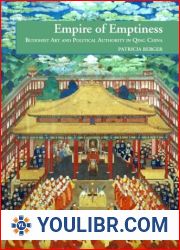
 49
49  2 TON
2 TON

